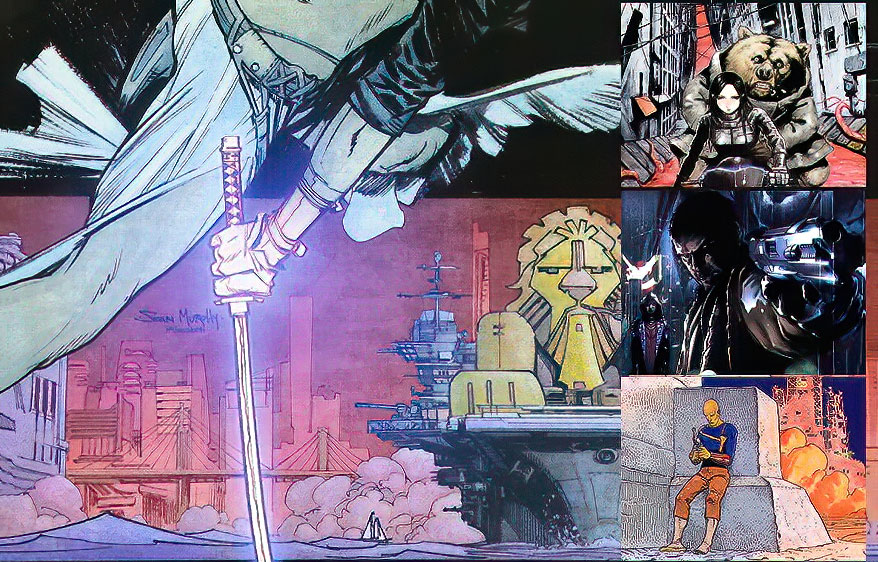A list of illustrated literature spanning Western comics, Japanese manga and graphic novels. Sorted by publication date.
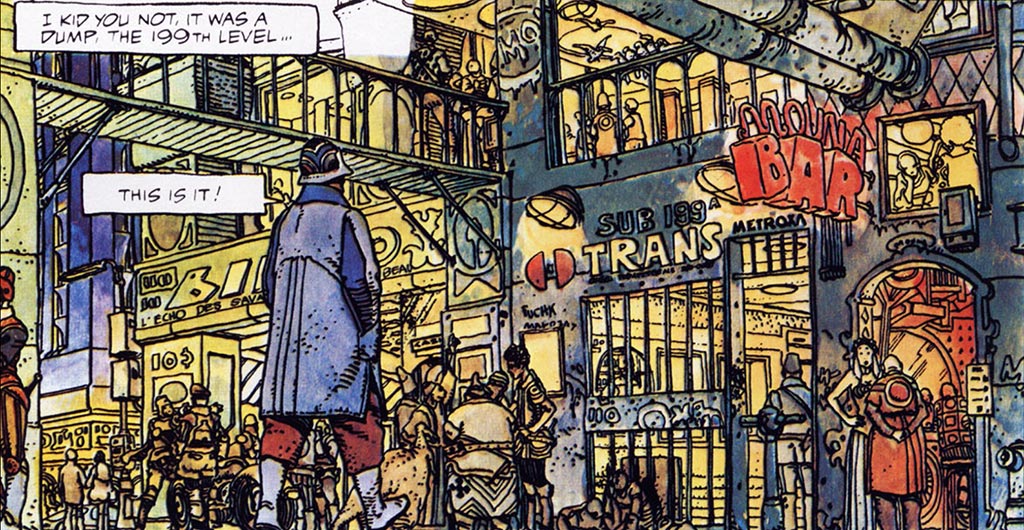
The Long Tomorrow | By: Dan O’Bannon & Moebius | Setting Date: Far Future
Published: 1975 | Type: Graphic Novel | Issues: 1
Themes: Multiculturalism, Overcrowding, Technocracy
Summary: A gritty short story with illustrations that were part of the French science fiction aesthetic of the 70’s that heavily inspired cyberpunk media such as Blade Runner and Neuromancer. The Long Tomorrow is a film noir hard boiled detective narrative complete with a femme fatale and predictions of a heavily urbanised future society. This is very short and any cyberpunk fan should check it out to see the early roots of the genre.

Akira | By: Katsuhiro Otomo | Setting Date: 2019
Published: 1982-1990 | Type: Manga | Volumes: 6 | Chapters: 120
Themes: Dystopia, Radical Politics, Overcrowding, Anarchy
Summary: Many elements of Akira are fantastical in nature rather than hard sci-fi but it remains relevant as a cyberpunk narrative due to strong punk themes, a narrative that is resistant to authority and a degraded urban setting. Fans of the film owe it to themselves to read the entire release, as the anime is considerably condensed.

Blade Runner | By: Archie Goldwin, Al Williamson & Carlos Garzon | Setting Date: 2019
Published: 1982 | Type: Comic | Issues: 2
Themes: Dystopia, Depopulation, Androids, Climate Change
Summary: This 2 issue special feature published by Marvel Comics was marketed to be released along side the film and was an official comic book adaptation. Due to the comic medium, this title spells out many of the film’s ambiguous scenes with narration. The comic is also rife with trivia, such as Deckard’s squad nickname “Mister Nighttime” and Gaff’s preoccupation with dress standards and presentation. Despite the relatively poor print quality, this is a must-read for fans of the original Blade Runner (1982) movie.
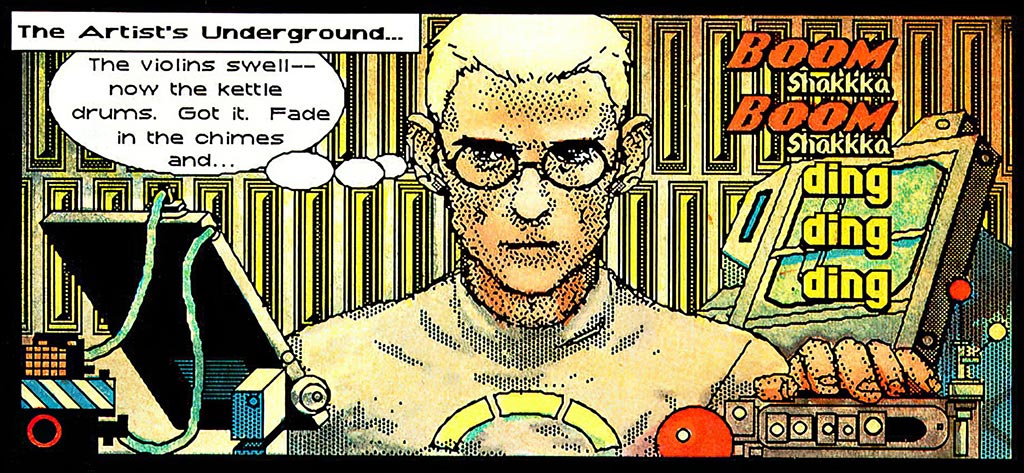
Shatter | By: Peter B. Gills & Mike Saenz | Setting Date: 2019
Published: 1985-1988 | Type: Comic | Issues: 14 (+ 1 special)
Themes: Dystopia, Robotics, Gene Science, Multiculturalism, Automation
Summary: Composed entirely on a Macintosh Plus using a mouse for drawing and printed on laser printers, this was the world’s first digital comic. This is the closest readers will get to a classic cyberpunk comic. It is slightly campy and has an endearing pixel art illustration style but is crammed full of every cyberpunk trope you could imagine. The title follows a police detective who works through a computer-aided reverse auction bounty system for jobs in a heavily over-crowded future metropolis. Blade Runner and other Philip K. Dick narratives were heavy thematic and aesthetic inspirations for this title. Many of the technologies and their societal responses are surprisingly predictive of what has transpired today in the 21st century. Well worth reading for any fans of Blade Runner or classic cyberpunk.
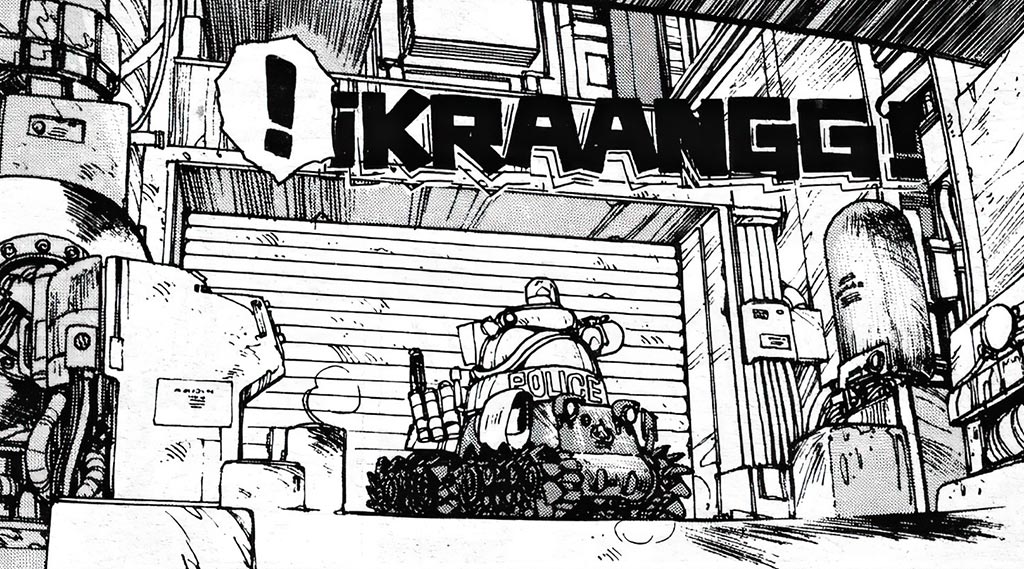
Dominion | By: Masamune Shirow | Setting Date: 2016
Published: 1986 | Type: Manga | Volumes: 1
Themes: Dystopia, Pollution, Climate Change, Cybernetics, Gene Science
Summary: Before Ghost in the Shell, Masamune Shirow created Tank Police, which also enjoyed translation to a short animated series. In a heavily polluted future metropolis called New Port City, respiration masks are necessary to venture outside. A heavily armed tank police are used to control the population as criminals have become more and more dangerous with new forms of military technology. A criminal cyborg and his two android assistants attempts to thwart a plot by the government to alter the human genome to produce its own oxygen rather than mitigate the pollution which is making the world unlivable. The tank police work to stop him in this comical but well illustrated short series. Several of the tank designs in this manga went on to be featured in the Ghost in the Shell franchise, as well as being set in the same fictional city including many other overlapping themes and references.
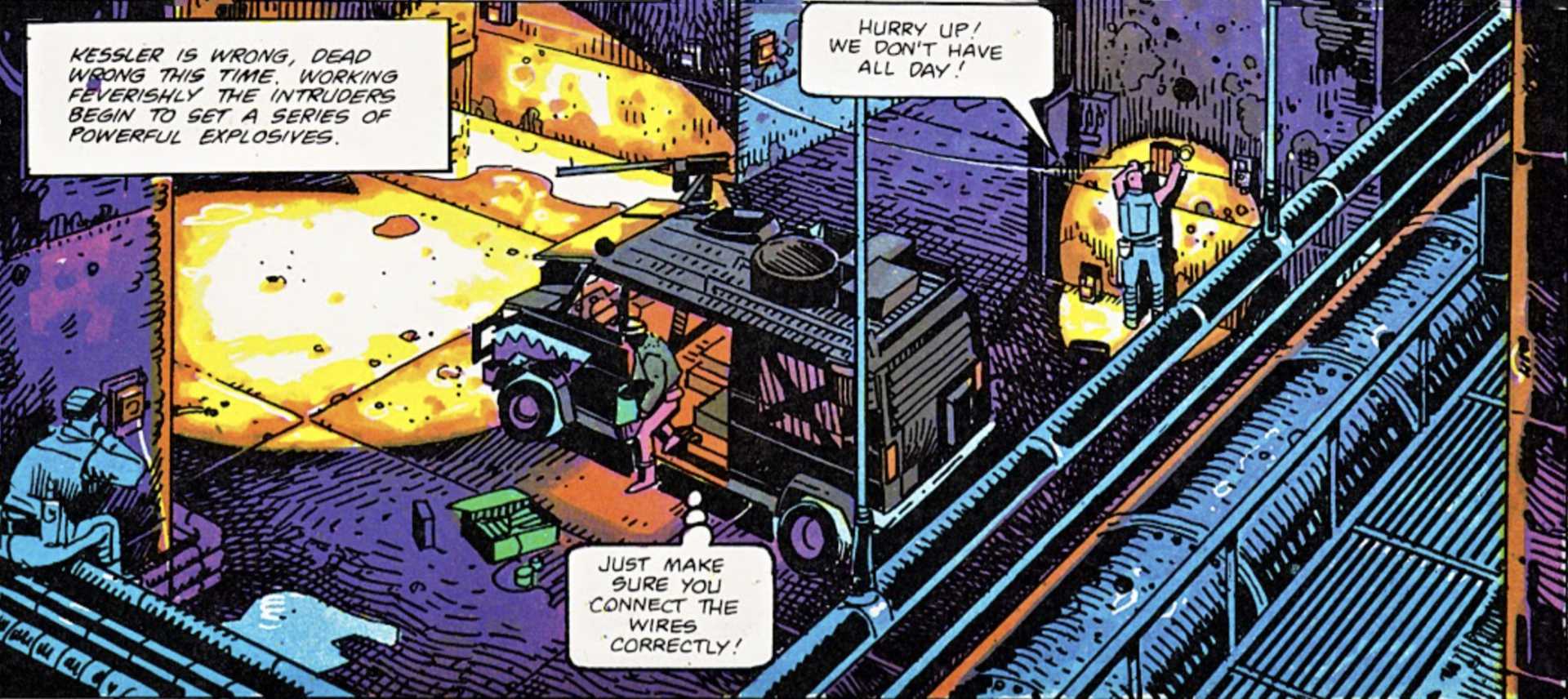
Rebel | By: Pepe Moreno | Setting Date: 2002
Published: 1986 | Type: Graphic Novel | Issues: 1
Themes: Post-Apocalyptic, Fascism, Survival, Dystopia, Urban Decay
Summary: A fast-paced, action-driven graphic novel that reads like a mix of Mad Max and Escape from New York. While post-apocalyptic settings are often outside the cyberpunk genre, the current political climate in the USA combined with the influence that Carpenter’s film had on the genre, with designers like Hideo Kojima lifting considerable aesthetic and thematic aspects of Escape from New York for his own work, then Rebel, despite being derivative, also deserves a place on this list. Set in a dystopian 2002 New York City, society has disintegrated, and the remnants of humanity fight over abandoned supermarkets living in anarchy amongst warlords. The United States’ sole governing force is a fascist military regime that maintains a utopic, walled-off city with high technology, creatingorder outside the gangland warzone. Using real photographs of New York landmarks, Moreno uses a vivid, Moebius-esque visual style and a heavy punk aesthetic that he infuses in his protagonists. The main character, Pepe, is ex-military and uses a range of guerilla warfare and espionage techniques, that fans of Kojima’s Metal Gear Solid series may enjoy.
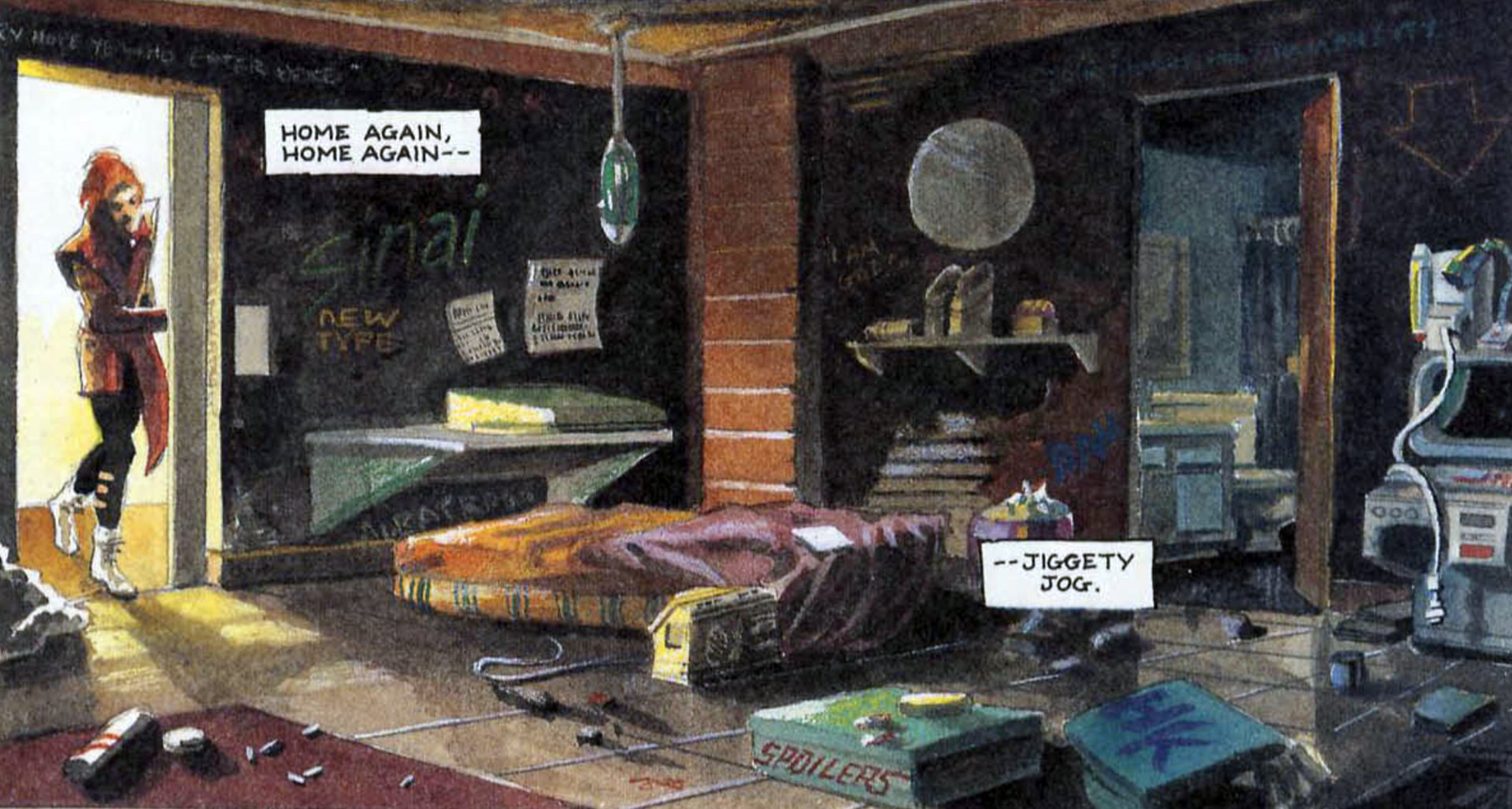
CYBERPUNK: Book 1 “… Bad Dreams” | By: Scott Rockwell | Setting Date: Near Future
Published: 1989-1990 | Type: Graphic Novel | Issues: 2
Themes: Cybernetics, Virtual Reality, Hacking
Summary: Heavily inspired by Neuromancer, this comic is somewhat notable for its graphic depictions of user’s interfacing on the internet. Here, Gibson’s “matrix” is called “The Playing Field”. The visual style blends Sid Meier’s aesthetic with 1980s computer graphics; however it is not a well-illustrated work compared to other titles in this list. The plot has a relatively stronger romantic narrative than other comic titles in the genre as well. The protagonist is a hacker named Topo, and while the narrative starts out promisingly with an immersive, gritty near-future megalopolis setting, a majority of the two issues are rather shallow action scenes that take place in The Playing Field. Fans of Neuromancer will appreciate the early exploration of virtual landscapes, and in doing so perhaps reveals the impracticality of Gibson’s early ideas of virtual reality networks by showing how inefficient they are compared to how technology actually evolved. Though not groundbreaking, with a very predicative, short plot, it is solidly within the genre’s core themes. The clothing designs ands styles on the characters are sometimes interesting if not aesthetic.
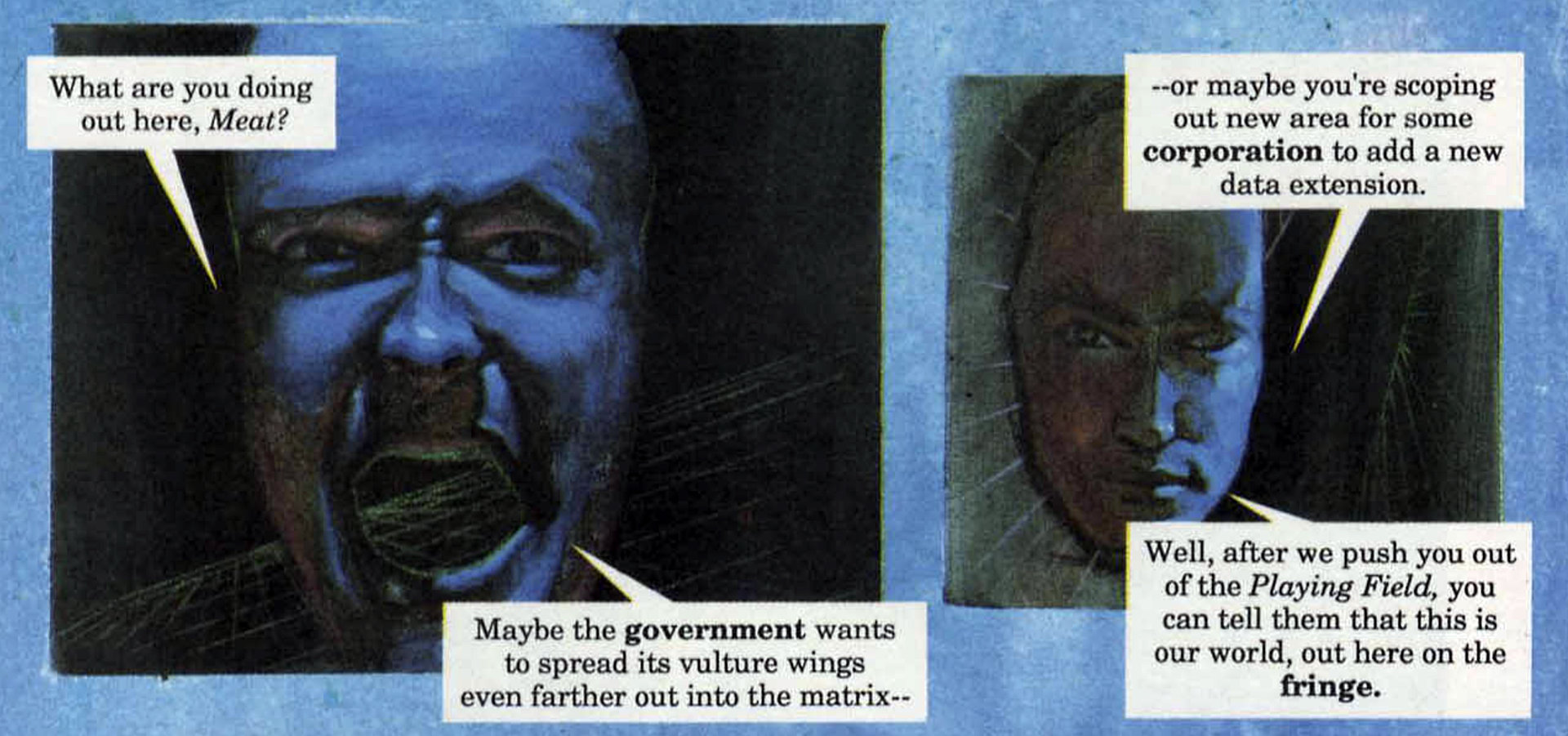
CYBERPUNK: Book 2 “Solace” | By: Scott Rockwell | Setting Date: Near Future
Published: 1990 | Type: Graphic Novel | Issues: 2
Themes: Virtual Reality, Corporatism, Cybercrime, Surveillance
Summary: In Innovation Publishing’s Cyberpunk: Book 2, the same three main characters’ narrative is extended three years in the future. Topo the hacker is now missing, permanently plugged into The Playing Field searching for the limits of the virtual world. His ex-lover seeks him out with the help of a gang of data thieves. This second book from Scott Rockwell is significantly better than the first. While it does feature many scenes within The Playing Field, they are depicted in a more emotional, dream-like aesthetic than the campy computer graphics that tried a literal interpretation of Gibson’s matrix interface. The artwork of Doug Talalla is of higher quality overall, and more creatively executed versus Book 1, which was illustrated by Darryl Banks. The romance subplot extends here, but in a rather unique way; interestingly bringing up unique ethical issues you wouldn’t expect from a comic, and which predate more well-known cyberpunk texts like Ghost in the Shell (1991).
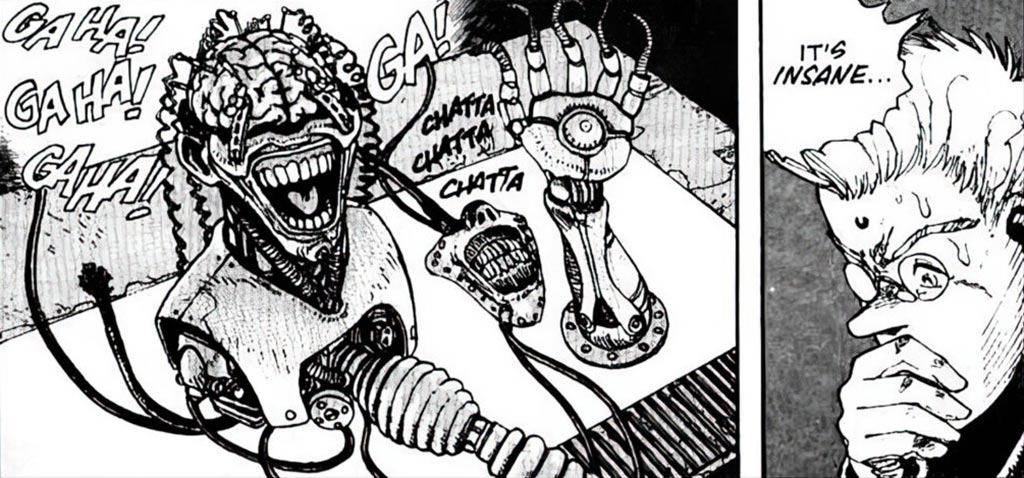
Gunnm (Battle Angel Alita) | By: Yukito Kishiro | Setting Date: 26th Century
Published: 1990-1995 | Type: Manga | Issues:
Themes: Post-Apocalyptic, Robotics, Cybernetics, Artificial Intelligence
Summary: A young female android, Alita, is found in a junkyard and resurrected by a cyborg physician. She finds out she is a combat cyborg and follows the doctor in his footsteps as a clandestine bounty hunter, and eventually pursues a quest to uncover more about her past. The divide between rich and poor has led to a segregation between the masses living on Earth and the elite living in a floating city. The manga takes place in the USA though being hundreds of years in the future all cities and places have been changed significantly. While post-apocalyptic in narrative, there are numerous cyberpunk tropes in the series and it has excellent art direction in general and numerous cyborg designs.
Note: A sequel to Gunm called “Battle Angel Alita: Last Order” was created by Kishiro as he was unhappy with the ending of the manga and wanted to continue it. It takes Alita into space and is more of a science fiction action epic than it is a cyberpunk narrative.
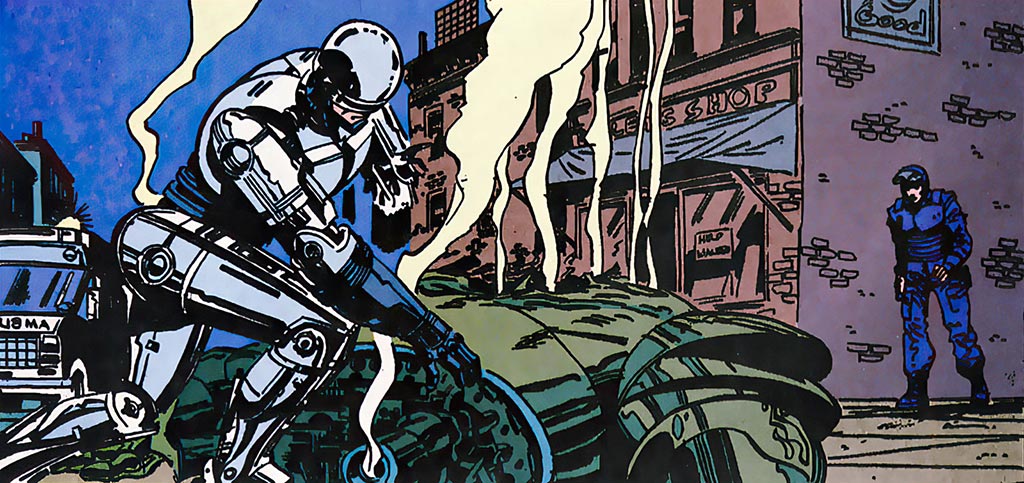
Robocop | By: Alan Grant & Lee Sullivan | Setting Date: Near Future
Published: 1990-1992 | Type: Comic | Issues: 23
Themes: Cybernetics, Robotics, Artificial Intelligence, Mind Control Technologies, Gene Science
Summary: These Marvel comics take place between the second and third films, but as the issues are set in the Marvel universe, Detriot is far more futuristic. Various arcs see Robocop go international fighting military targets in North Africa, new corporations that rival OCP and rebel South American groups. Various robot soldiers feature heavily in all the conflicts and in true comic form the plots are far more violent and epic in scope than the films. This first run of Marvel comics featuring Robocop also deal with a number of cyberpunk and futurist science fiction tropes such as lucid dreaming technologies, cloning brain waves from a deceased person to place in a robot shell and even an issue with a Jurassic Park riff. The issues feature significantly more science fiction than the films do and are worth reading for fans of the genre, not just of Robocop.
Note: There were also film adaptation comics of all three Robocop films in 1987, 1990 and 1993 respectively.
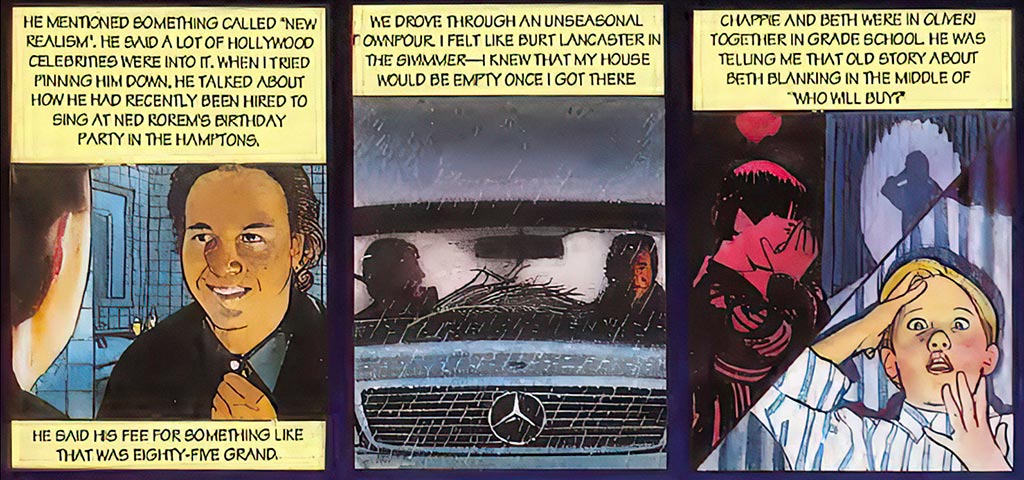
Wild Palms | By: Bruce Wagner & Julian Allen | Setting Date: 1990’s
Published: 1990 – 1993 | Type: Graphic Novel | Issues: 1
Themes: Virtual Reality, Pharmacology, Collective Mind Control, Conspiracy , Hyperreality
Summary: A fast-paced, satirical and often dark graphic novel that delves into an alternate reality to the narratives society is fed by the media. Extremely intelligent and laden with references and subtext from pop culture, Wild Palms also poses numerous technological “what if’s?” regarding virtual reality and mass media pharmacology hybrids. The series was first serialized in Details magazine before being compiled in 1993 into a complete graphic novel at its completion. While there are no cybernetically augmented hackers or gangbangers performing matrix runs in Asian dystopian metropolises, this provides a more grounded, and for that reason more terrifying, look at how technology may be used in the future for political and corporate control.
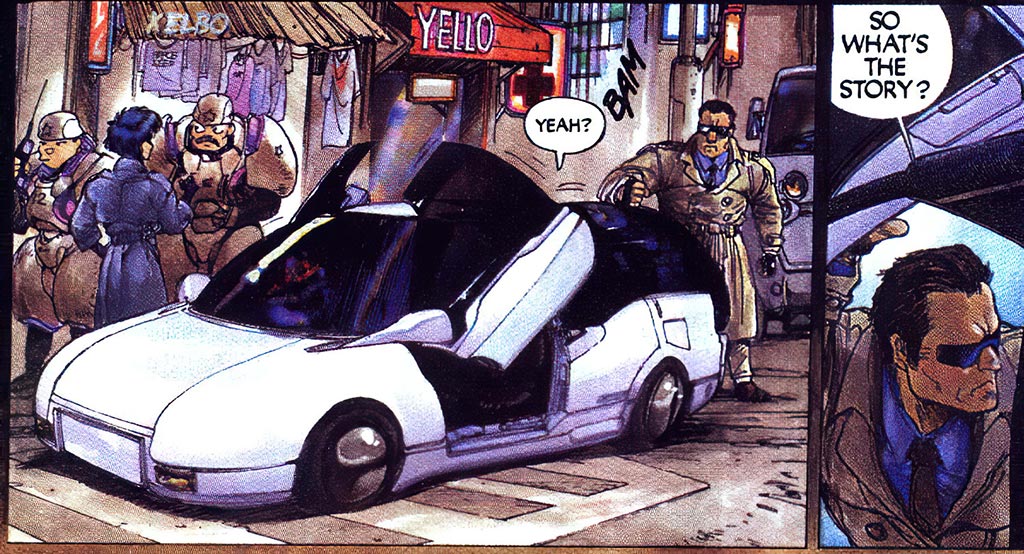
Ghost in the Shell (Mobile Armored Riot Police) | By: Masamune Shirow | Setting Date: 2029-2030
Published: 1991-1995 | Type: Manga | Issues: 11
Themes: Artificial Intelligence, Robotics, Cybernetics
Summary: One of the most well-known cyberpunk franchises in any medium. Like Shirow’s Dominion (1986) it is also set in New Port City, but with a slightly less campy premise and art direction. The story follows a female cyborg and her team in an elite governmental agency known as Section 9 as it grapples with a powerful Artificial Intelligence. For better or worse the manga is not as deep or nuanced as the film, but there are plenty of cyberpunk tropes for fans as well as novel character and technology designs.
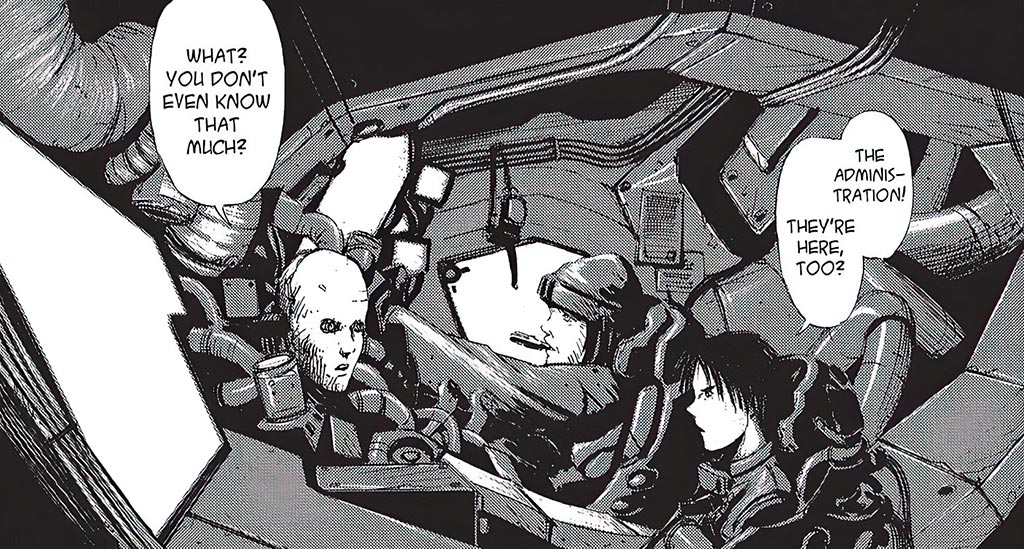
Blame! | By: Tsutomu Nihei | Setting Date: Far Future
Published: 1996-2003 | Type: Manga | Volumes: 10 | Chapters: 67
Themes: Cybernetics, Robotics, Post-Apocalyptic
Summary: Blame! is the best known creation by Takeshi Nihei, however it is only included in this list because it is commonly associated with the cyberpunk aesthetic. The setting is far, far future, there is very little hard science fiction involved and with the setting so far removed from our own reality there is little value it can provide in way of socio-political critique. The art style is often associated with cyberpunk because of the heavy use of decaying electronic components, wires and gothic tropes. This means the manga is more dark space fantasy than cyberpunk. Worth reading regardless as the quality is high.

Transmetropolitan | By: Warren Ellis & Darick Robertson | Setting Date: 23rd Century
Published: 1997-2002 | Type: Comic | Issues: 60
Themes: Transhumanism, Dystopia, Corruption
Summary: Spider Jerusalem, a retired, reclusive journalist is pulled out of his hermitage to return to a dystopian city life to fulfill publishing obligations. Angry at the state of the world, he and two assistants work to take down corruption using Gonzo journalism and advanced information technology. Hunter S. Thompson in the future would be an apt summary. Satirical and with a solid American art style, this comic provides both cyber and punk elements in spades. Fans of the goth sub-culture should also enjoy the aesthetics and narrative. The high tech low life mantra is illustrated adeptly in this series.

Eden: It’s an Endless World | By: Hiroki Endo | Setting Date: Near Future
Published: 1998-2008 | Type: Manga | Volumes: 18 | Chapters: 126
Themes: Post-Apocalyptic, Quantum Computing, Robotics, Cybernetics, Artificial Intelligence
Summary: After the world’s population is largely killed off by a virus, a politico-religious group establishes a new order. The protagonist is the teen-aged son of one of the major rebel leaders against this group. While much of this manga occurs in wilderness, there are a great deal of metropolitan settings. This is more a militaristic action epic than the film noir-esque narratives that typically define the cyberpunk genre. However, it still deals with many cyberpunk tropes and its discussions on religion, racial nationalism and sentience featuring machines are somewhat novel. Well illustrated and expansive, this is one of the longer mangas in this list and if you are a fan of the first few chapters there is plenty to keep you entertained.
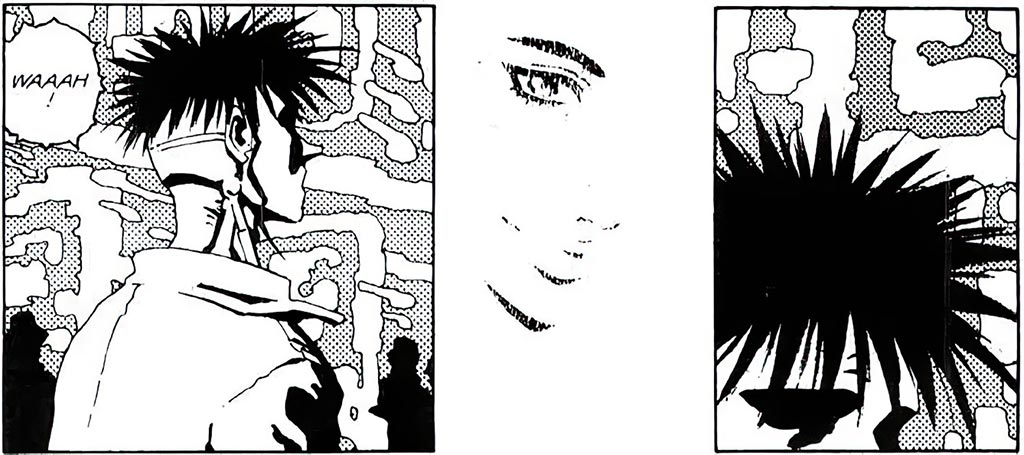
Haisha (Ashen Victor) | By: Yukito Kishiro | Setting Date: 26th Century
Published: 1998 | Type: Manga | Volumes: 1 | Chapters: 4
Themes: Cybernetics, Robotics, Post-Apocalyptic
Summary: Set in the same universe as Gunm (Battle Angel Alita), this short 4 chapter side story focuses on the ultra violent, televised motorball sport with a new cyborg called Snev. This manga critiques the relationship between spectator sports and their need for more and more audience viewership. Issues such as taking a dive, performance enhancing drugs and non-success priorities are all discussed. Further it delves into the consumer demand for hardcore violence and snuff porn and the impact it has on its victims. Being so short, and with its focus more on society, this feels more cyberpunk than Gunnm. Worth reading since it is short, especially if you liked Gunnm.
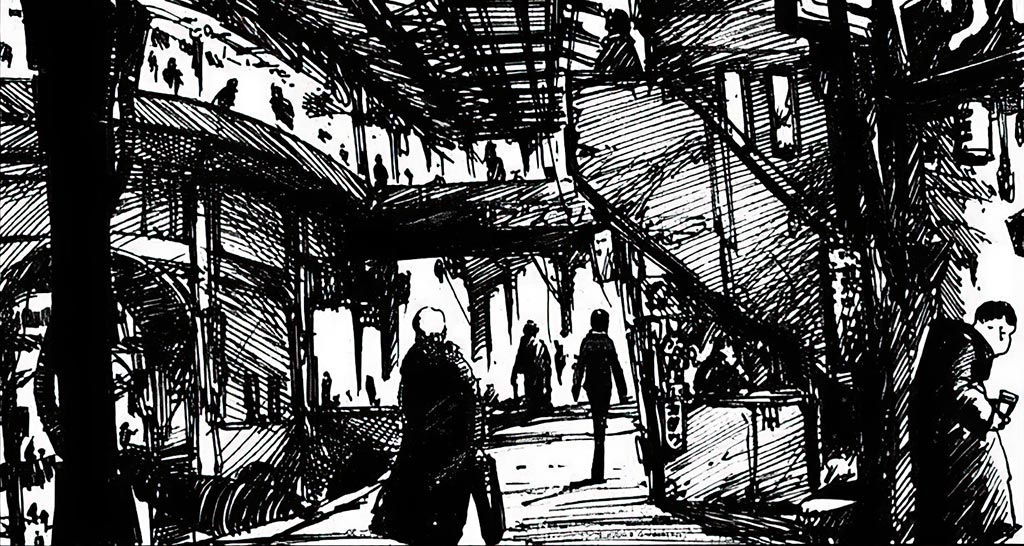
NOiSE | By: Tsutomu Nihei | Setting Date: Far Future
Published: 2000-2001 | Type: Manga | Volumes: 1 | Chapters: 6
Themes: Cybernetics, Robotics, Dystopia
Summary: NOiSE is a short prequel to Blame! providing background and origins to the megasphere. This is the most cyberpunk of Nihei’s work given that an actual functioning society operates in this setting and is based around the investigations of a female detective providing a number of noir tropes. Police uniforms and some of the costumes look to be referenced straight from Blade Runner (1982). It is very short and well worth a read if you are a fan of Blame!
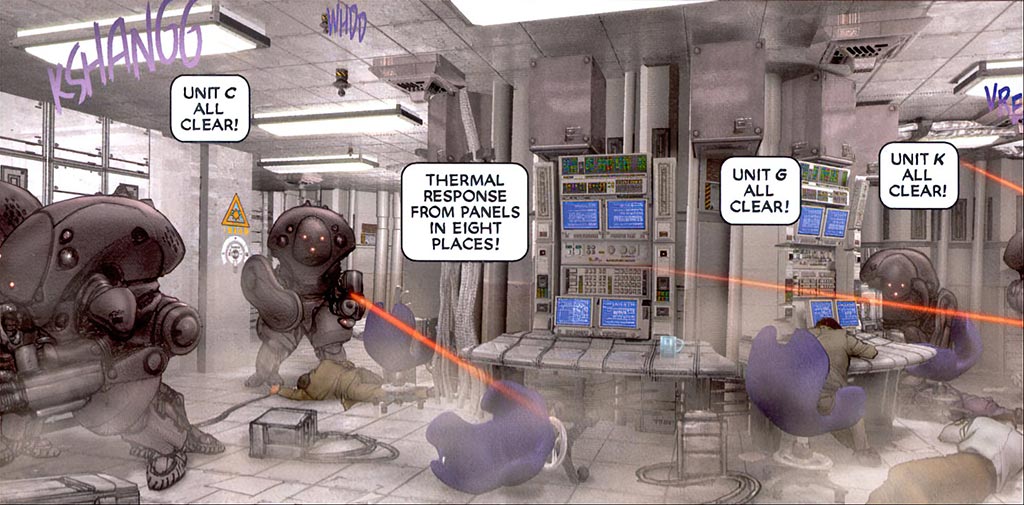
Ghost in the Shell (Mobile Armored Riot Police) 2: Man Machine Interface | By: Masamune Shirow | Setting Date: 2035
Published: 2001-2005 | Type: Manga | Issues:11
Themes: Artificial Intelligence, Robotics, Cybernetics
Summary: Some five years after the original series, the Major has now evolved into a network of beings she controls while working for a large corporation. While not as novel as the original manga, it still poses a number of new questions for society and artificial intelligence based on the “ghost” concept and being able to clone one’s consciousness digitally and how that could impact society.
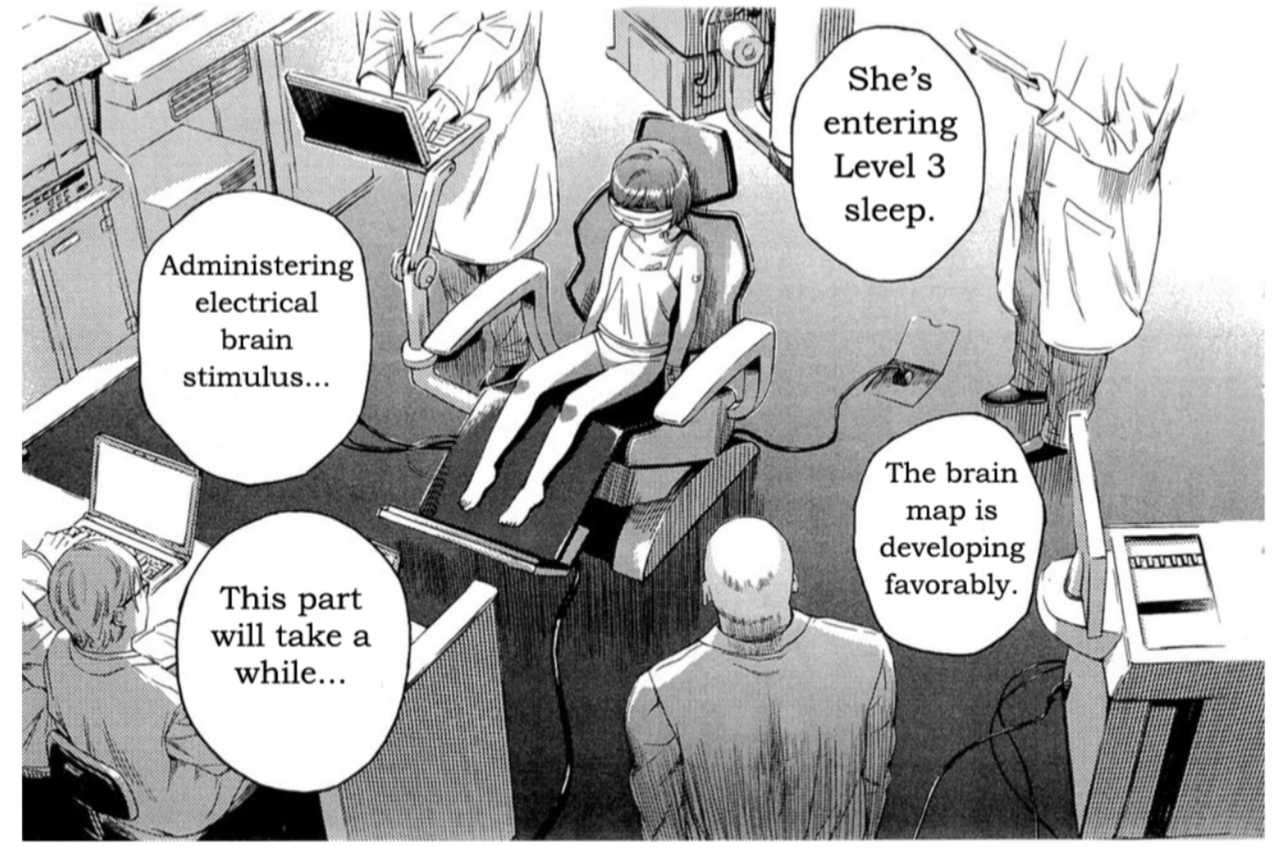
Gunslinger Girl | By: Yuu Aida | Setting Date: 21st century
Published: 2002 | Type: Manga | Issues: 15
Themes: Cybernetics, Terrorism
Summary: The Italian government rescues young girls who were abused. They brainwash the girls and fit them with cybernetic enhancements to form an elite squadron, trained in counter-terrorism. Because of their age and unstable minds, each girl has a handler to provide supervision.
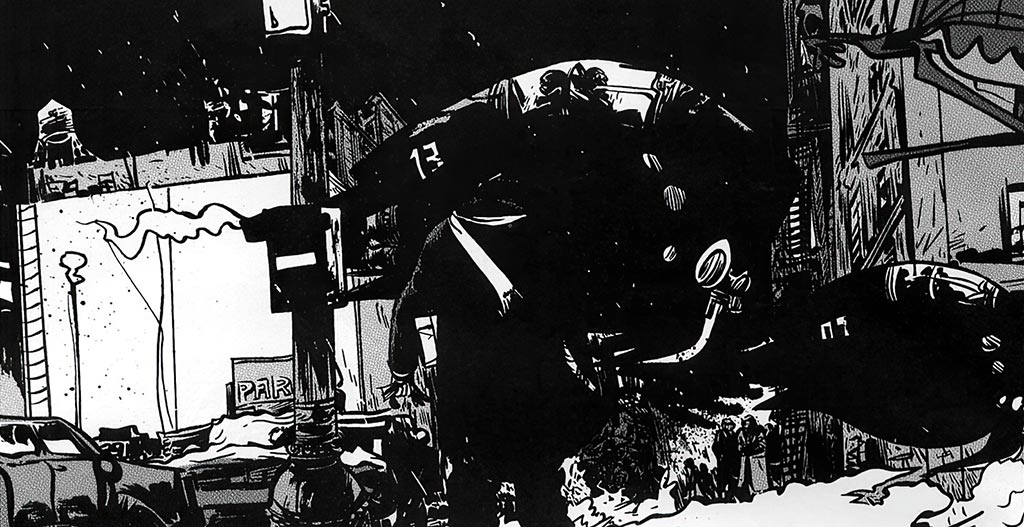
100% | By: Paul Pope | Setting Date: 2038
Published: 2002-2003 | Type: Comic | Issues: 5
Themes: Dystopia, Virtual Reality, Multiculturalism
Summary: A short five issue series that revolves around a handful of diverse characters in New York City whose lives intersect around a holographic strip club. Surprisingly romantic despite its dystopian setting, this comic would appeal to those don’t typically enjoy the medium. Well-written, insightful and less action-oriented than many of the other titles in this list; 100% will appeal to those who like a neo-noir with a more grounded take on the development of technology and society. Despite being a more introspective title, there are still plenty of new technologies and how they may be used by real people day to day for cyberpunk fans to enjoy. The illustration style is unique and impactful and the narrative is far more relatable than other cyberpunk series such as Blame! which are set so far in the future as to be more fantastical than speculative in their nature.
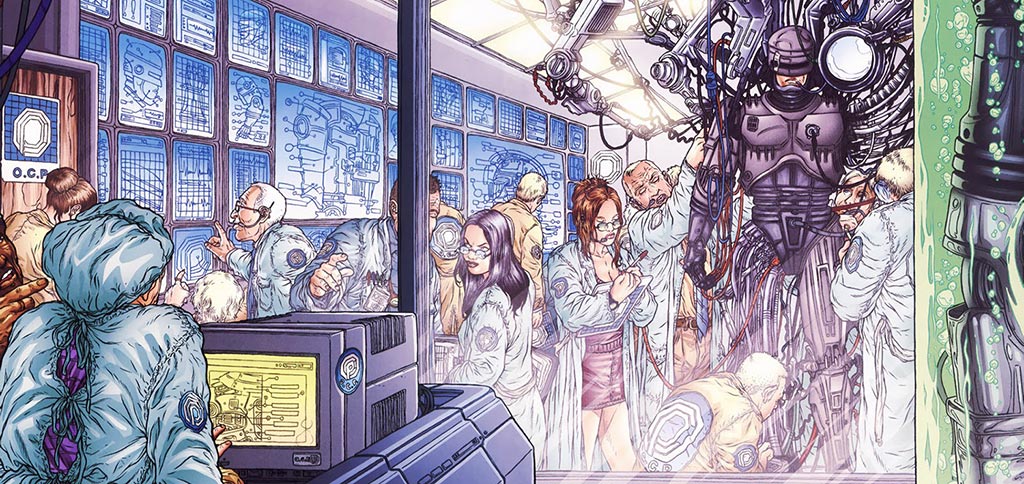
Frank Miller’s Robocop | By: Frank Miller | Setting Date: Near Future
Published: 2003-2006 | Type: Comic | Issues: 9
Themes: Dystopia, Cybernetics
Summary: This nine issue comic was based on the unused screenplays for the Robocop 2 and 3 films drafted by Frank Miller (of Sin City fame). They are presented in Miller’s gritty, violent art direction. Unfortunately this series is more style over substance and the original Marvel run of Robocop comics features significantly more cyberpunk tropes and science fiction material to digest. This short series is better left for fans of Miller or Robocop as a franchise.
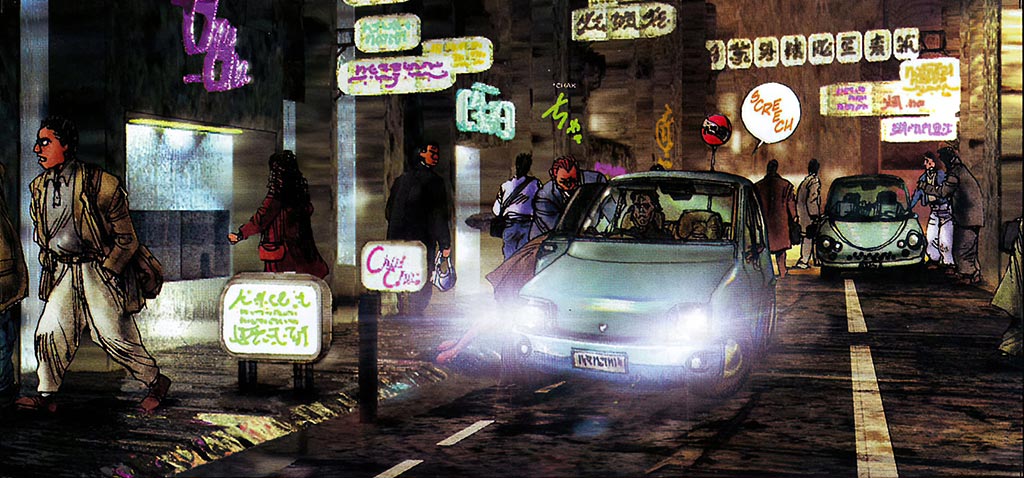
Ghost in the Shell (Mobile Armored Riot Police) 1.5: Human-Error Processor | By: Masamune Shirow | Setting Date: 203X
Published: 2003-2007 | Type: Manga | Issues: 8
Themes: Artificial Intelligence, Robotics, Cybernetics
Summary: With the newly human-AI hybrid Major leaving Section 9 to work as a contractor, these eight issues focus on an array of cyber crime and terrorism cases that Batou and other remaining agency members deal with. More episodic, this short manga provides further world building and more content for fans of the Ghost in the Shell franchise.
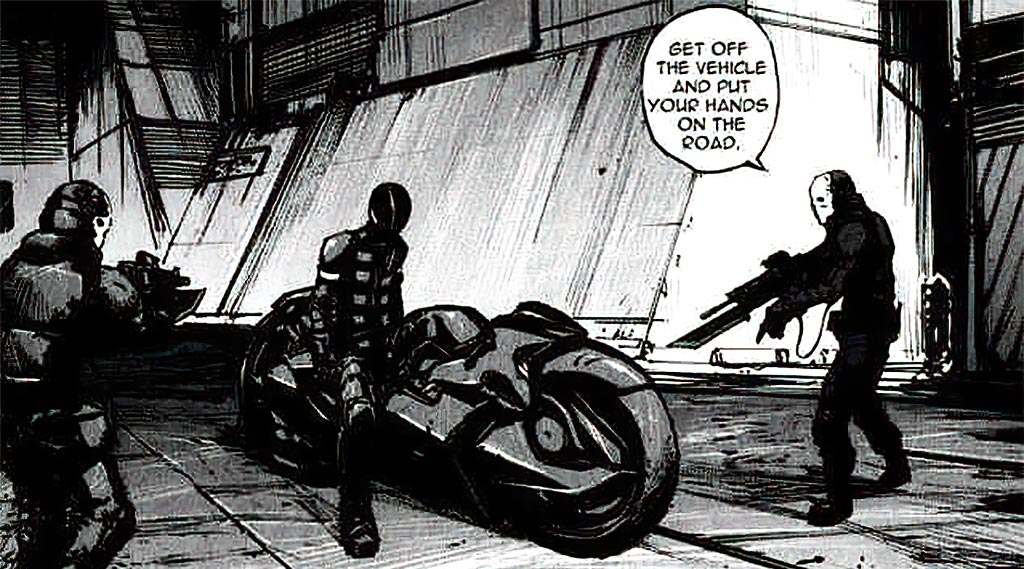
Bio Mega | By: Tsutomu Nihei | Setting Date: 3006A.D.
Published: 2004-2009 | Type: Manga | Volumes: 6 | Chapters: 43
Themes: Cybernetics, Robotics, Post-Apocalyptic
Summary: A rogue android and former employee of TOA Heavy Industries named Zoichi searches for humans who have adapted to a zombification virus. The art style and character design of this post-apocalyptic manga bears much similarity to Blame! but has a far more nuanced and developed plot. The first volume is decidedly more cyberpunk the remainder of the narrative with some semblance of a metropolis, corporations and individualistic technology. As the manga proceeds it becomes more of a post-apocalyptic science fiction. However, if you enjoyed Blame! this will provide a similar aesthetic and is arguably more cyberpunk as a narrative.
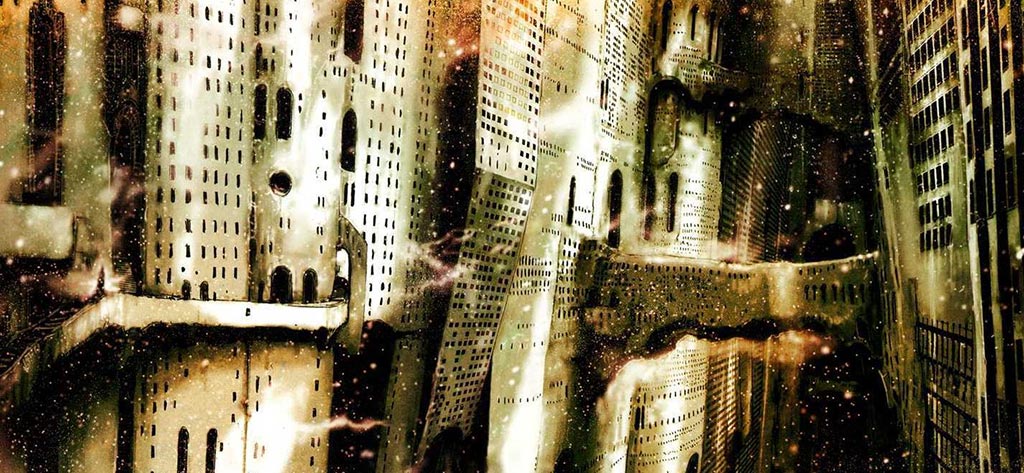
Net Sphere Engineer | By: Tsutomu Nihei | Setting Date: Far Future
Published: 2005 | Type: Manga | Volumes: 1 | Chapters: 1
Themes: Cybernetics, Robotics, Post-Apocalyptic
Summary: Set long after the events of Blame! where it is revealed that the protagonist Killy was successful in halting the Netsphere and its safeguard systems Much of humanity has regressed to a more technologically simple, but more peaceful, existence. However, remnants of the Netsphere continue to attack new settlements of humanity. This is a single short chapter and provides a kind of epilogue to Blame! and is worth reading for fans of that manga, but offers little for cyberpunk fans beyond more content with a gothic, cybernetic aesthetic.
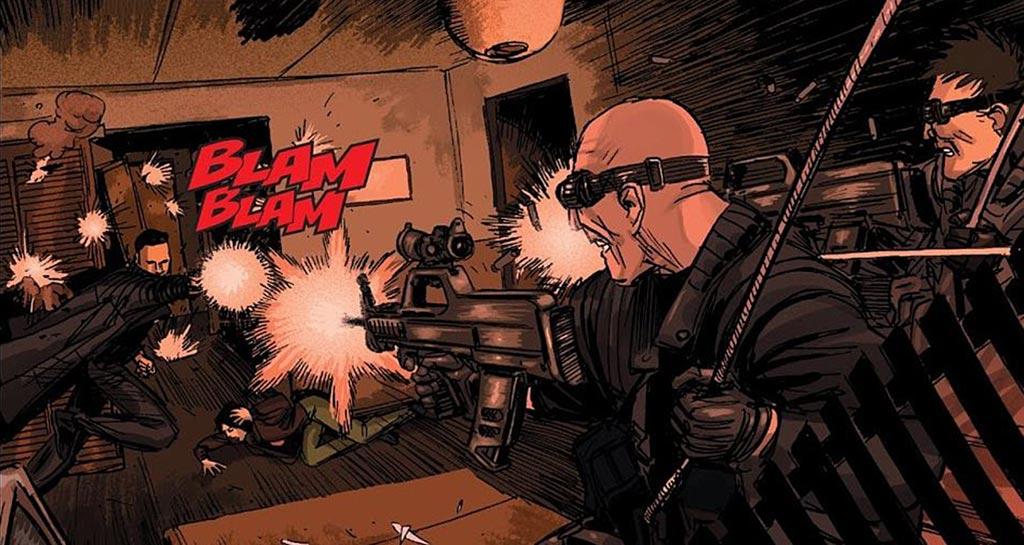
Dust to Dust | By: Chris Roberson | Setting Date: 202X
Published: 2010 | Type: Comic | Issues: 8
Themes: Android Culture, Pollution, Climate Change, Scarcity
Summary: Prequel to Philip K. Dick’s Do Androids Dream of Electric Sheep? The story is short and simplistic but is well illustrated and the narrative will appeal to fans of Blade Runner (1982) and DADoES. The comic is relatively action packed with little added to the world building or franchises. Thus, as more of an extension to DADoES or Blade Runner it is best for fans of those texts but offers little on its own as a cyberpunk narrative.
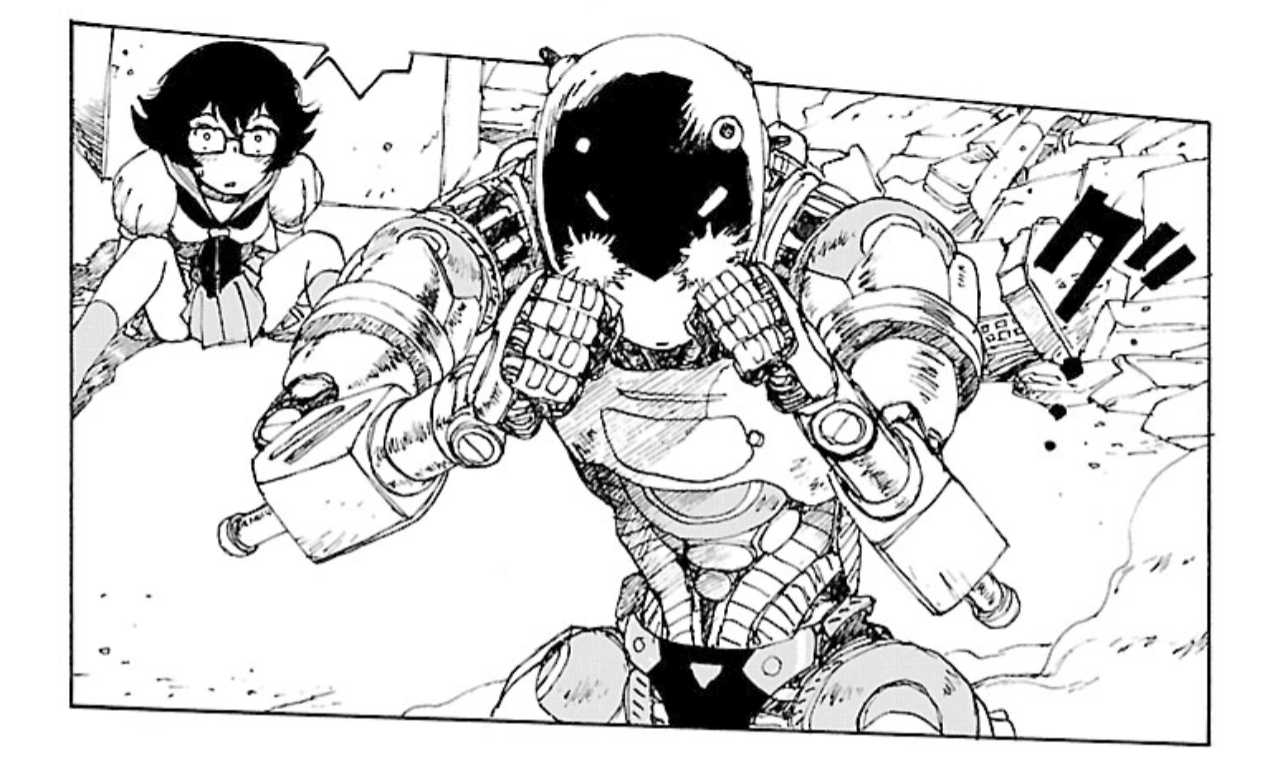
Atom – The Beginning | By: Masami Yuuki, Tetsuroh Kasahara & Makoto Tezuka | Setting Date: Near Future
Published: 2014 | Type: Manga | Issues: Ongoing (18 as of 06.23)
Themes: Artificial Intelligence, Robotics, Post-Apocalyptic
Summary: A prequel to Astro Boy, after a mysterious catastrophe destroyed large parts of Japan, university researchers began working on creating artificial intelligence that has a will on it’s own, an AI with ego. The robot A106 (“Atom”) they developed is equipped with said AI.

Tokyo Ghost | By: Rick Remender & Sean Murphy | Setting Date: 2089
Published: 2015-2016 | Type: Comic | Volumes: 2 | Issues: 10
Themes: Dystopia, Pollution, Climate Change, Automation, Information Overload, Cybernetics
Summary: A female detective and her musclebound but internet addicted boyfriend / partner work for the nation of Los Angeles’ ruler and media mogul Flak. Their small nation is plagued with constant murders, the majority of the population hopelessly addicted to augmented and virtual reality media which is endlessly streamed into their personal communications. With LA running dangerously low on resources, the pair are sent by Flak to technology-free Japan to help shut down the EMP keeping the country dark in order to plunder it. While many of the pages can lose themselves in campy dialogue, repetitive melodrama or absurdist slapstick, there are morsels of insight warning of the dangers of information addiction and the excesses that could occur once automation renders human labour obsolete.
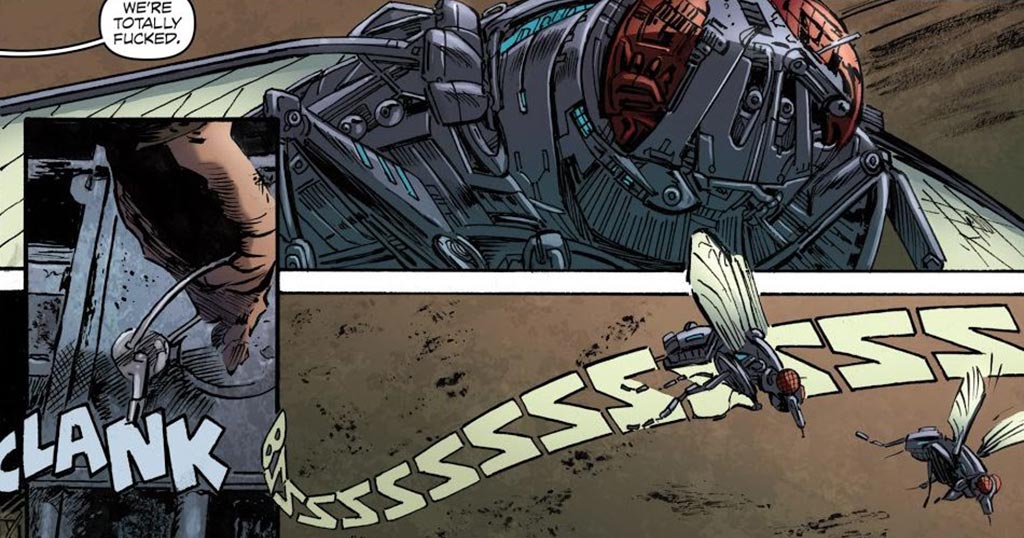
Archangel | By: William Gibson & Michael St. John Smith | Setting Date: 2016 and 1945
Published: 2016-2017 | Type: Comic | Issues: 5
Themes: Futurist Technology
Summary: Billed as alternative reality science fiction, this has been included only because it is co-authored by William Gibson. It is a short five issue run that is more a time travel fantasy than anything cyberpunk. However it does contain tropes such as inter-cultural intrigue and futurist technology such as a stealth suit.
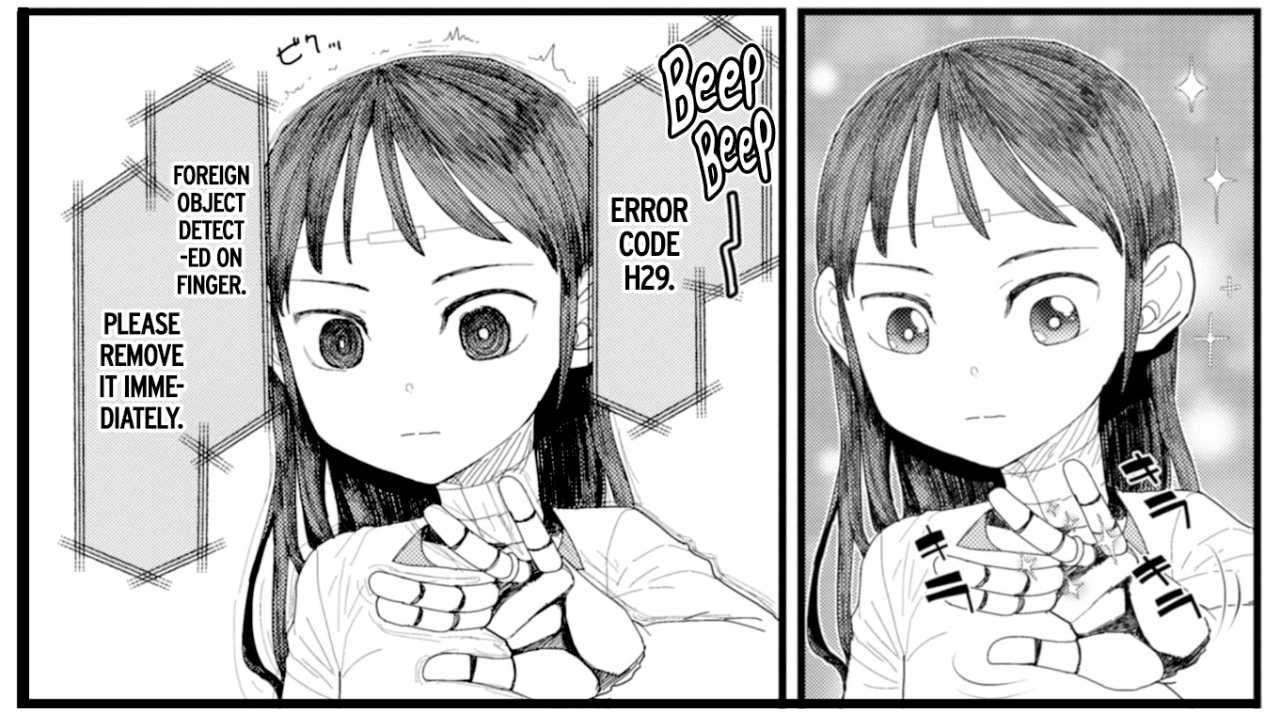
Boku no Tsuma wa Kanjou ga Nai | By: Jiro Sugiura | Setting Date: Near Future
Published: 2019 | Type: Manga | Issues: Ongoing, currently 6
Themes: Man-Machine Romance, Robotics, Futurist Technology
Synopsis: After starting to live alone, the protagonist purchases an entry level robot, designed to do chores around the house. He quickly falls in love with her, resulting in their marriage. While robots are common, Man-Machine Romance is a rather uncommon phenomenon. The story is more light-hearted than the average cyberpunk story and contains only very little action. However, the morals of Man-Machine Romance and to an extent a future of sexless males in society as well as the resulting technology to replace intimacy are important aspects. In this setting, not all members of society agree with this replacement and the manga covers these conflicts.
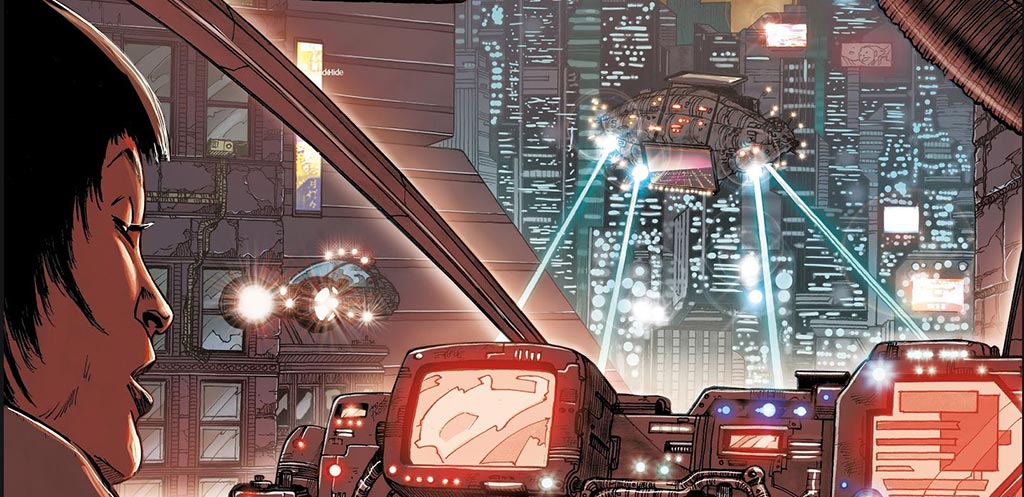
Blade Runner 2019 | By: Michael Green, Mike Johnson & Andres Guinaldo | Setting Date: 2019 – 2026
Published: 2019-2020 | Type: Comic | Issues: 12
Themes: Androids, Futurist Technology, Cybernetics, Scarcity
Summary: This is a must read for cyberpunk and Blade Runner fans. It is a sequel to the original 1982 film with all new characters set in a similar time frame. With world building, character development and a plot that surpasses the 2017 Blade Runner 2049 film, this does everything right. Blade Runner fans also get to see what the off world colonies look like and there is a slightly expanded world history for the setting that includes Mexico. Excellent illustrations, plenty of action and believable character motivations make this easily one of the better comics in this list. Even if you are not a comic/manga fan, this and Wild Palms should still be on your to read list.
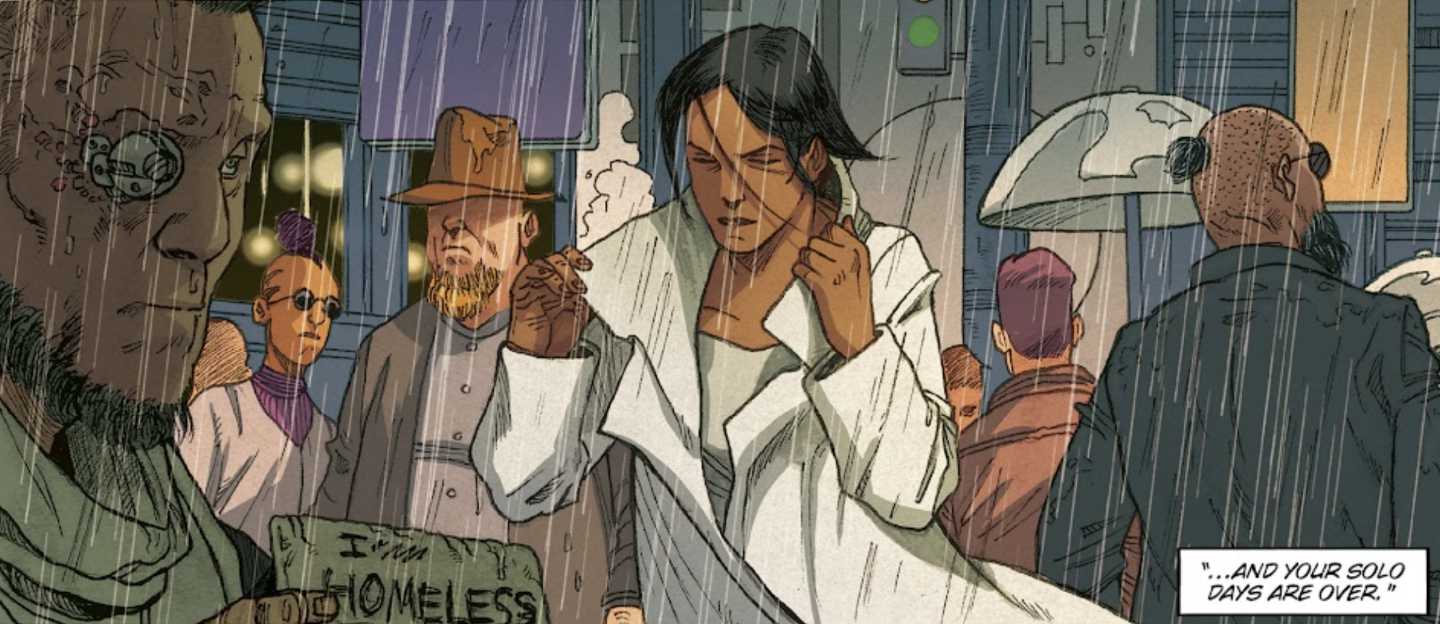
Blade Runner 2029 | By: Michael Green, Mike Johnson & Andres Guinaldo | Setting Date: 2017 – 2029
Published: 2020-2021 | Type: Comic | Issues: 12
Themes: Androids, Futurist Technology, Cybernetics, Scarcity
Summary: This is a very disappointing sequel to the well-executed Blade Runner 2019. Set ten years in the future, it follows the same female protagonist, “Ash”, from Blade Runner 2019, however instead of giving her more character development and nuance, she has been reduced to a rather one dimensional figure, lacking all her nuance that she had in Blade Runner 2019. Further, the plot is essentially a rehash of Blade Runner (1982) with a few side stories, one of which is actually rather fresh and interesting, that are quashed and go nowhere within a single issue. The illustration work is markedly lower in quality than Blade Runner 2019, which was a disappointment and the majority of the issues are so action-heavy there is little room for narrative at all, making it seem like a cynical cash grab to simply riff on the two movies in the franchise using the Blade Runner 2019 comic’s characters. There is very little of value in this comic except for hardcore fans of the Blade Runner 2019 comic.
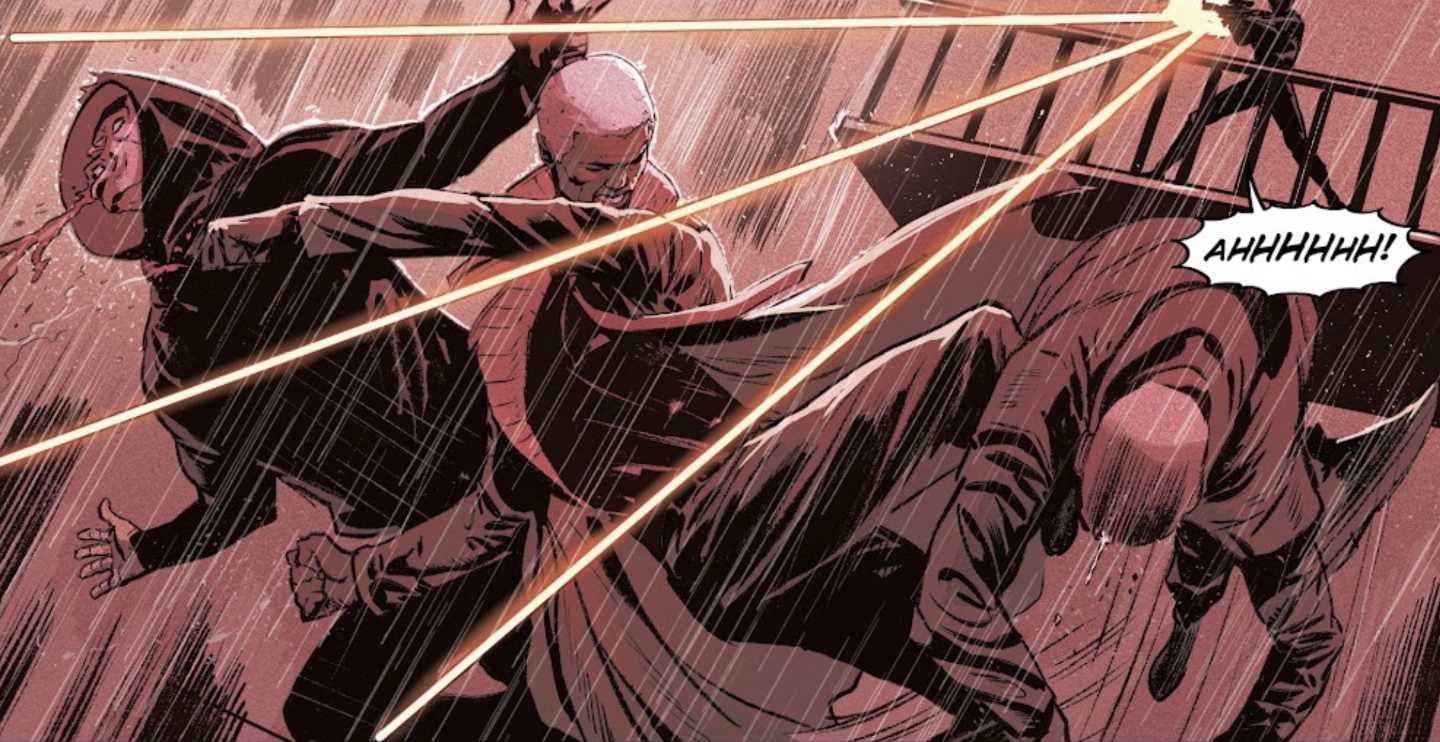
Blade Runner Origins | By: Mellow Brown, Mike Johnson, K. Perkins, & Fernando Dagnino | Setting Date: 2009
Published: 2021-2022 | Type: Comic | Issues: 12
Themes: Androids, Futurist Technology, Cybernetics, Scarcity
Summary: Set before the events of the original Blade Runner (1982) film, only Mike Johnson stayed on in an otherwise all new creative team for this latest installment in Titan Comics’ Blade Runner comics franchise. The illustrations are much better than Blade Runner 2029’s, closer to the quality in the first 2019 comic. Unfortunately, it still suffers from many of Blade Runner 2029’s failings, including being far too action heavy and heavily riffing on thematic and aesthetic elements from Blade Runner (1982) and Blade Runner 2049 (2017) down to the costumes and antagonist choice. To call this work derivative is being kind, however it is not applied as cynically as it is in Blade Runner 2029. A major plot point is also taken from Ghost in the Shell (1995) which comes across as off-brand to Blade Runner’s established world building. There are quite a number of disparities in this title to other existing works in the Blade Runner universe which might annoy some fans. Having said that, it is good to see new characters and their developments are better established than Blade Runner 2029’s for the most part, even if the protagonist in this comic is pretty much a Black version of Deckard turned into a lethal killing machine. The narrative is also perhaps more akin to an action comic from Marvel, and for whatever that’s worth, it is an improvement on the disappointingly rehashed plot of Blade Runner 2029. This is worth checking out if you are a fan of the franchise, even if you were let down by Blade Runner 2029. Note: for a more thoughtful take on the Blade Runner universe with an African American hero, check out Dust to Dust (2010), which is also a prequel to Deckard’s story.
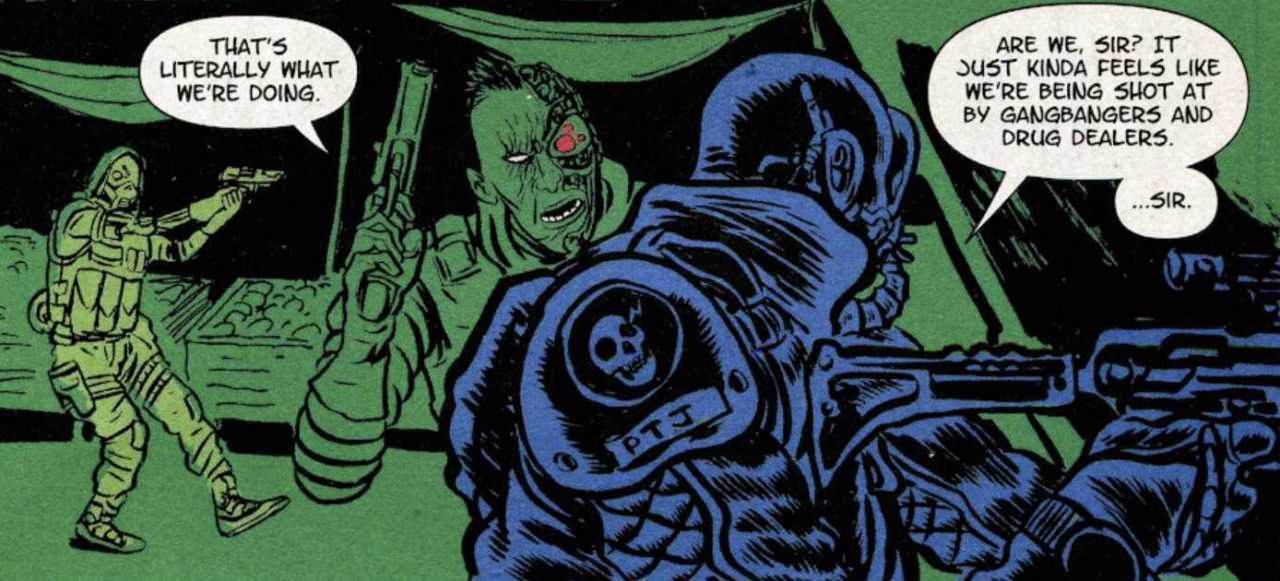
Night Hunters | By: Dave Baker & Alexis Ziritt | Setting Date: 2057-2078
Published: 2022 | Type: Comic | Issues: 4
Themes: Cybernetics, Scarcity, Over-population, Dystopia
Summary: An independent comic uniquely set in Caracas, Venezuela that revolves around two brothers in conflict: a cybernetically enhanced police sniper and a drug lord. Big on action, with simplistic but graphic illustrations and with a rather basic but pure cyberpunk narrative and setting; this comic is well worth checking out even just as an art book. With Caracas transformed into an over-populated ghetto with waiting lists to get into prisons, a rather bleak and violent future is depicted in Night Hunters. Baker and Ziritt are independent artists who are creating new cyberpunk works in fresh settings, rather than the typical long-coating wearing Deckard clone in an American or Asian city, and that is something that fans of the genre should be supporting.
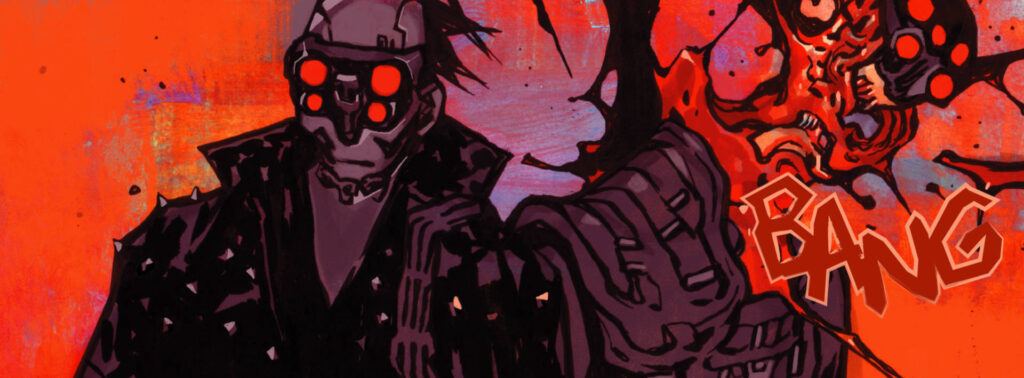
Cyberpunk 2077: XOXO | By: Bartosz Sztybor & Jakub Rebelka | Setting Date: Night City, 2077
Published: 2023 | Type: Comic | Issues: 4
Themes: Cybernetics, Dystopia
Summary: To cope with his girlfriend leaving him, a man de-humanises himself with numerous cybernetic implants. Now in a gang of cyborgs, while in the middle of a drug robbery of a rival set, he turns on his comrades once he realises his ex is in the opposing party; thus starting a short narrative where the pair attempt to survive while fencing the shipment. Cyberpunk 2077: XOXO has an extremely shallow, gory, and thankfully short, storyline, with all four issues readable in under thirty minutes total. The vivid, simplistic art style may appeal to some, but this really only has value to collectors who enjoy the Cyberpunk 2077 franchise.
Fair Use Statement: This article contains images hosted without express permission from their copyright holders. These images are provided for illustration purposes to support an informational objective. This should constitute fair use of any such copyrighted material.
If you enjoyed this article, supporting SHELLZINE by any amount can be made via the link below. Your contribution is completely optional and all funds help cover the website’s growing hosting costs and enable further original content creation without the use of advertisements. Secure payments by all major card types, including Google Pay and Apple Pay, are supported.

